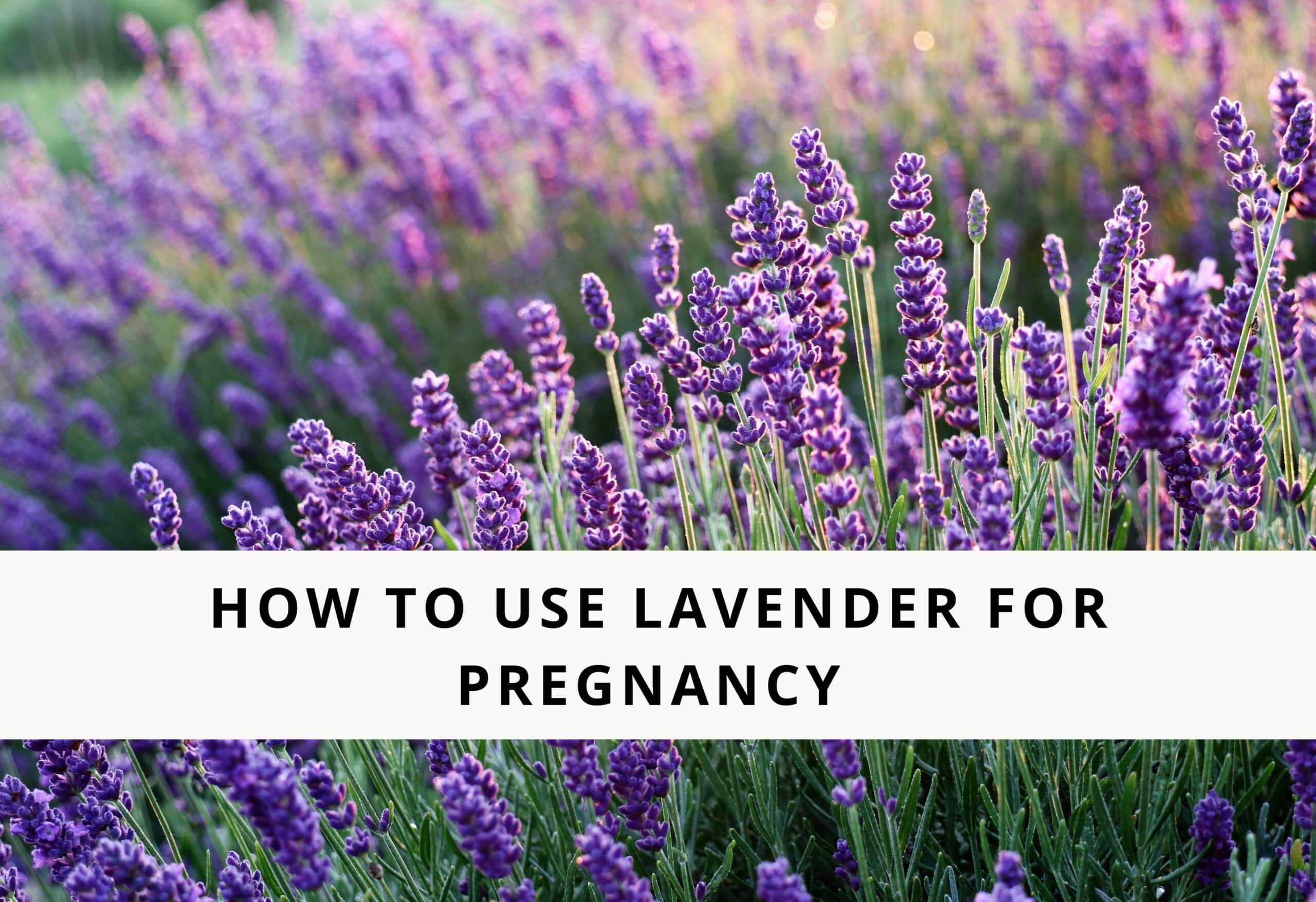What is lavender?
Lavandula Officinalis also known as Lavender is a mint plant native to southern France and the Mediterranean, the lavender plant enjoys growing in sunny locations without frequent watering (Elpel, 2008; Gladstar, 2012). This aromatic purple-flowered plant is a historical herb that has been used for perfumes and medicine for hundreds of years (Balch, 2012).
Lavender grows in small shrubs with multiple stems topped with tiny purple flowers (Balch, 2012). This medicinal herb can be grown in most areas of the United States! If you plan on growing lavender to harvest it for its medicinal properties, it is best to harvest the flowers when they are about to open to harvest the most potent medicine from them (Gladstar, 2012).
What Are the Benefits of lavender For Pregnancy?
Lavender essential oil has calming and relaxing effects, making it perfect for helping parents stay calm during labor and aiding those difficult-to-sleep nights during the third trimester. If you are curious about using essential oils during labor, please check out my blog post, Essential Oils for Labor and Delivery or My Top 4 Favorite Essential Oils For Labor And Birth.
Lavender oil can aid in headaches, childbirth, muscle spasms, nervousness, nausea, gas, fatigue, and eczema. It can be used topically/externally as an antibacterial, anti-fungal, and antiseptic in treating wounds, burns, and acne (Tierra, 1998; Balch, 2012). Using lavender essential oil can ease nervousness and insomnia.

How can lavender be used to help with pregnancy-related issues such as nausea, headaches, and insomnia?
Pregnancy can come with several discomforts, like nausea, headaches, and insomnia. Lavender can be an answer to these problems either by itself or partnered with other herbs.
Use lavender for pregnancy to aid nausea or headaches by placing a few drops of lavender essential oil on a cotton ball and breathing slowly and deeply with the cotton ball held close to your face. The lavender will help calm your nerves. You can also use peppermint or grapefruit oil to help calm nausea. You’ll be able to read more about essential oils in labor by clicking here.
If you are having difficulty falling asleep because of muscle pain or soreness, you or your partner can add a few drops of lavender oil to some massage oil and massage the muscles that are bothering you. This increased comfort, paired with the calming effects of lavender, is fantastic to help you get to sleep when battling pregnancy insomnia.
Are there any risks associated with using lavender during pregnancy?
When using lavender for pregnancy, pregnant people should use caution if using large quantities of lavender. Lavender Oil should never be ingested or used internally (Balch, 2012; Gladstar, 2012).
How can lavender be used?
The flower of the lavender plant is the most commonly used part, but the leaves can also be used. Lavender can be used in a standard infusion or tea, aromatherapy, baths, compresses, and as an essential oil. You can also bake with Lavender flowers! Ingesting Lavender should be done in moderation in pregnancy.
Above are the lavender products I use at home and births. You can learn more about my favorite essential oils to use at births as a doula and student midwife by reading my blog post, My Top 4 Favorite Essential Oils For Labor And Birth.
By purchasing the products above via the links, you can help support my website because I earn a small commission as an amazon affiliate.
References
Balch, A. (2012). Prescription for herbal healing (2nd edition). Penguin Group.
Elpel, T. (2008). Botany in a Day. HOPS Press, LLC
Gladstar, R. (2012). Rosemary Gladstar’s Medicinal Herbs: A Beginners Guide. Storey Publishing.
Tierra, M. (1998). The way of herbs. Pocket Books.
The above resources are linked to the product page on amazon, so you can easily purchase the product yourself. If you click the product through this link, I will earn a small commission as an amazon affiliate. I appreciate you supporting my website by clicking through these links!








